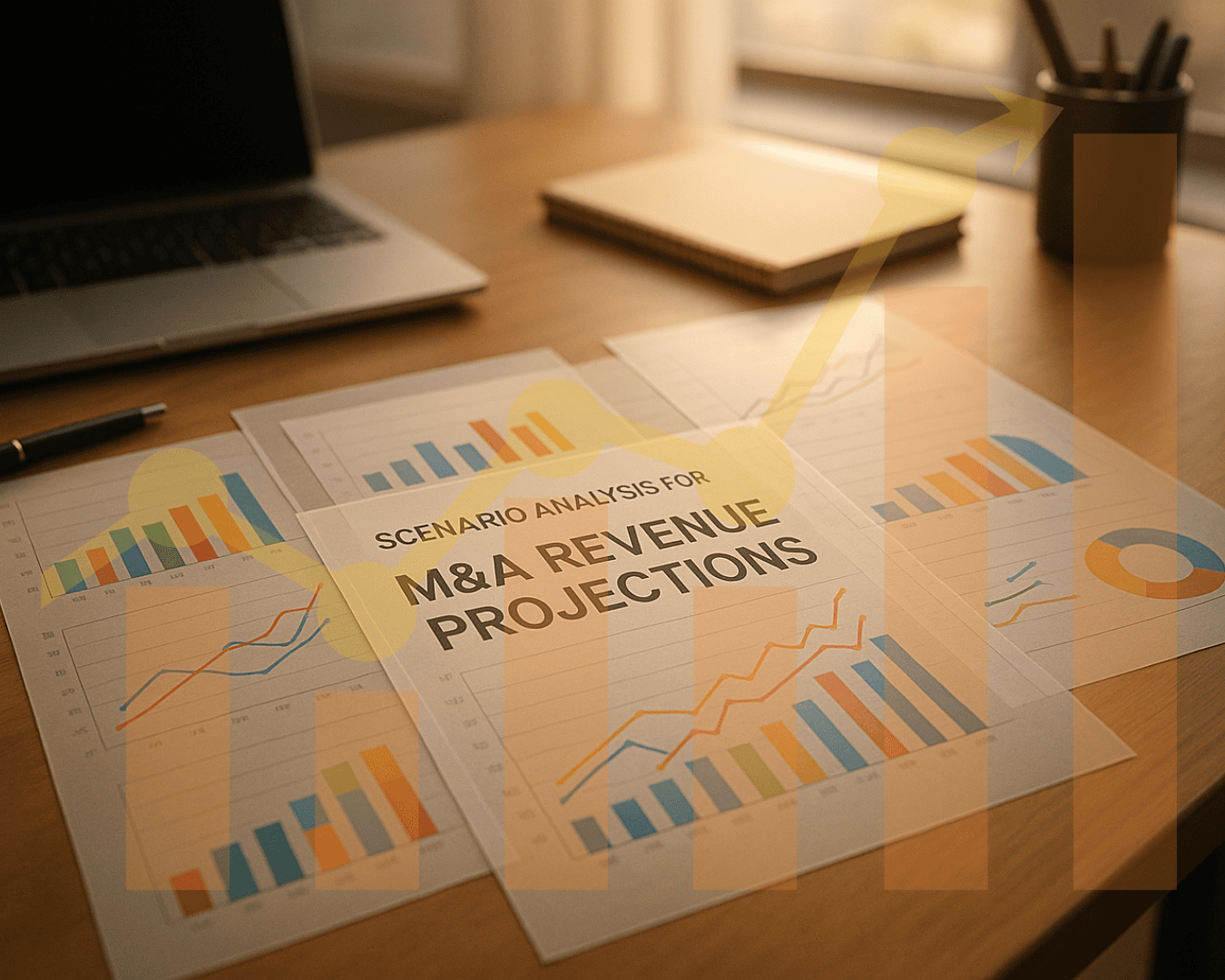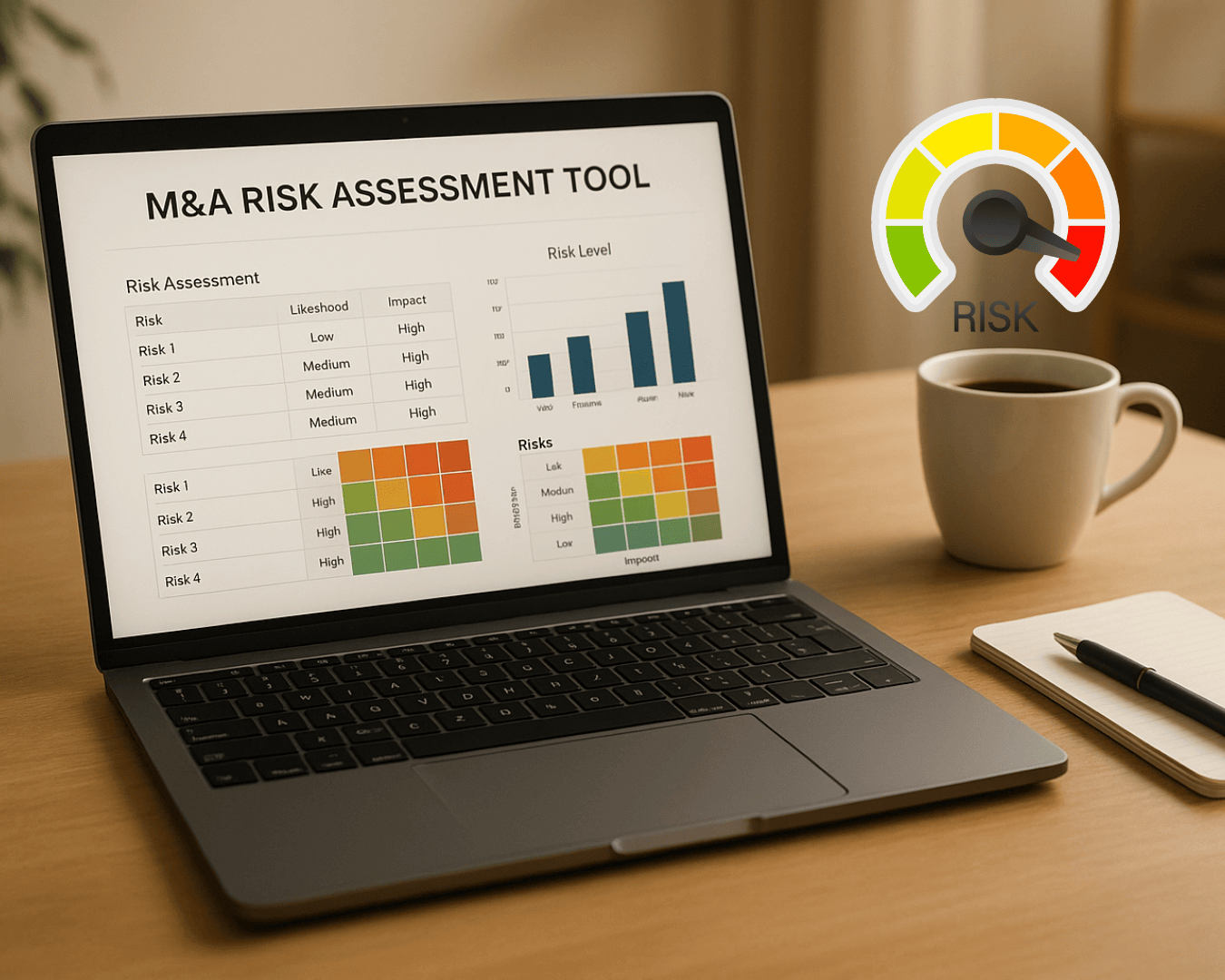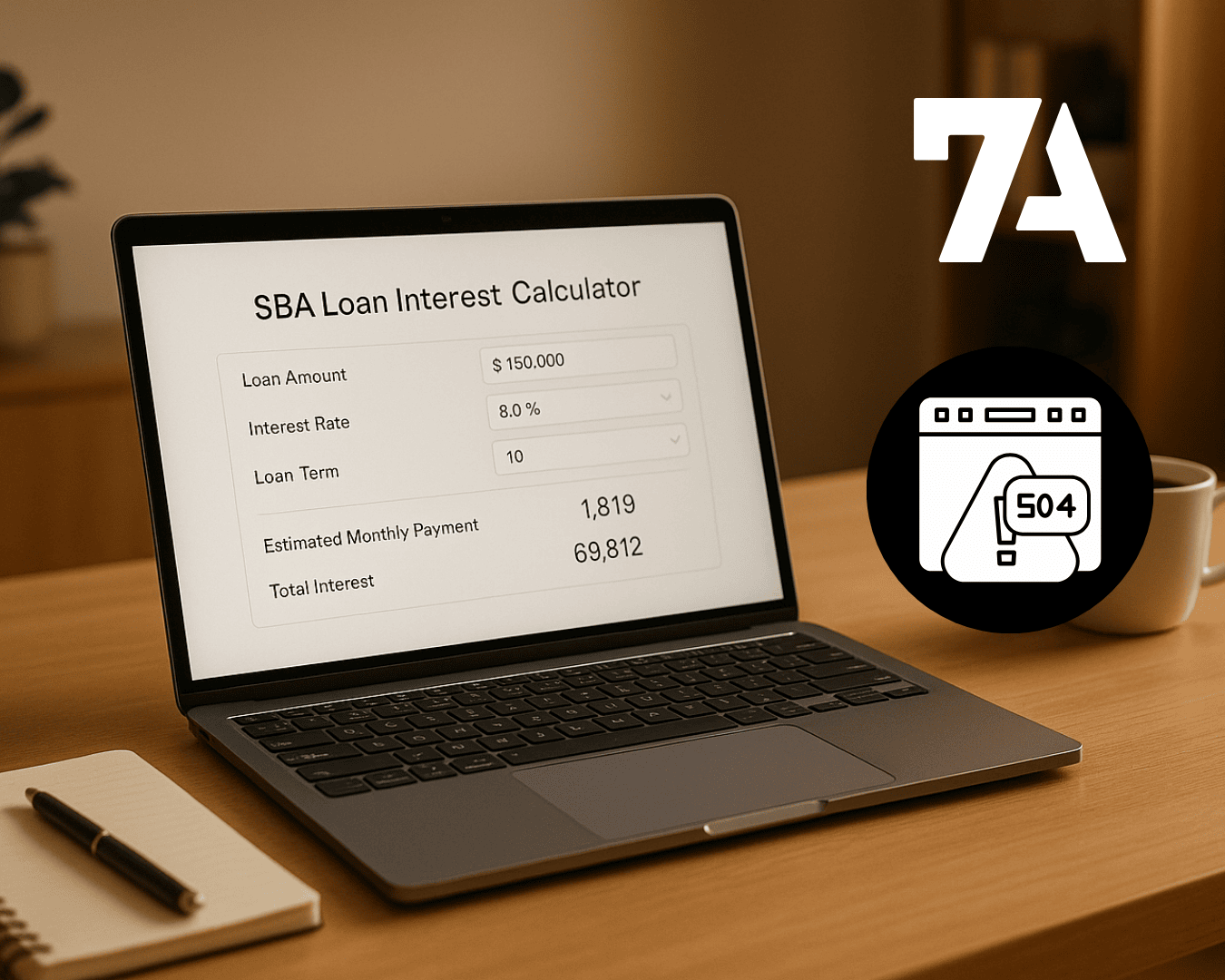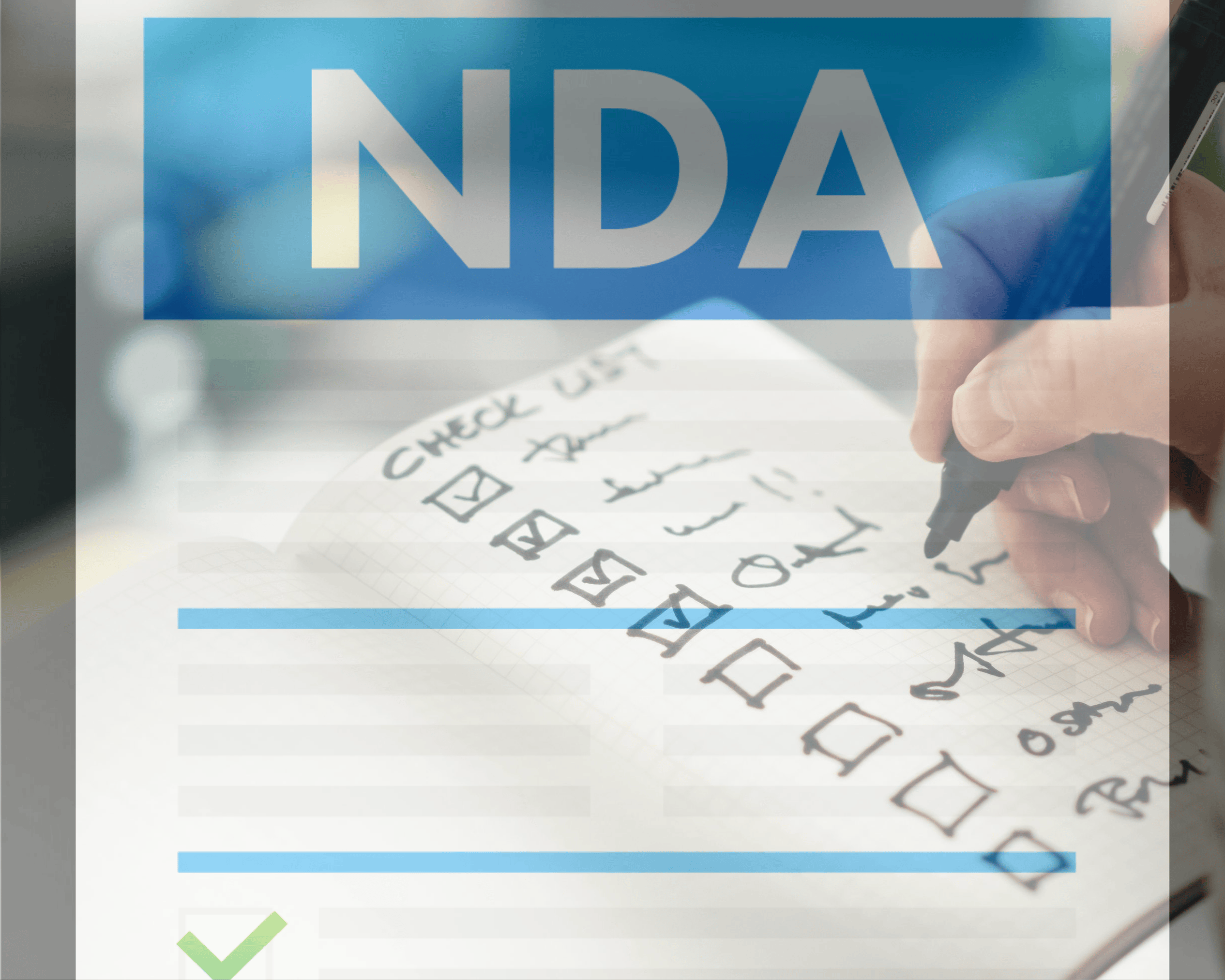Understanding the Debt Service Coverage Ratio (DSCR) is critical when buying a business. It shows whether a company generates enough cash flow to cover its debt payments. A DSCR of 1.0 means the business breaks even on debt, while anything above 1.0 indicates stronger financial health.
Key Points:
- DSCR Formula: Net Operating Income ÷ Total Debt Service.
- Why It Matters: Higher DSCR reduces risk, helps secure loans, and ensures the asking price is manageable.
- Typical Lender Requirements: Most lenders look for a DSCR of 1.25 or higher.
- Industry Benchmarks: DSCR expectations vary by industry (e.g., Manufacturing: 1.3–1.8, Retail: 1.2–1.5).
Example: A business with $450,000 NOI and $280,000 debt payments has a DSCR of 1.61, meaning it generates 61% more cash than needed for debt.
To improve DSCR, focus on increasing income, cutting costs, or refinancing debt. Use tools like Clearly Acquired for analysis and decision-making.
DSCR Calculation Steps
Basic DSCR Formula
The formula for calculating DSCR is simple: divide Net Operating Income (NOI) by Total Debt Service (TDS).
DSCR = Net Operating Income ÷ Total Debt Service
To determine NOI, start with EBITDA (Earnings Before Interest, Taxes, Depreciation, and Amortization) and make the necessary adjustments. Once you have the figures, apply the formula to calculate DSCR.
Sample DSCR Calculation
Here's an example of calculating DSCR for a small manufacturing business:
Step 1: Calculate Net Operating Income
- Revenue: $2,500,000
- Operating Expenses: $1,900,000
- EBITDA: $600,000
- Owner's Salary Adjustment: -$150,000
- Adjusted NOI: $450,000
Step 2: Calculate Total Debt Service
- Principal Payments: $200,000
- Interest Payments: $80,000
- Total Debt Service: $280,000
Step 3: Calculate DSCR
DSCR = $450,000 ÷ $280,000 = 1.61
A DSCR of 1.61 means the business generates 61% more cash than required to cover its debt payments. Further adjustments can fine-tune this calculation.
Common DSCR Adjustments
| Adjustment | Details | Effect |
|---|---|---|
| Owner's Compensation | Standardize salary | May increase or decrease NOI |
| One-time Expenses | Remove non-recurring costs | Increases NOI |
| Capital Expenditures | Include equipment replacement | Reduces available cash flow |
| Seasonal Revenue | Average revenue over the year | Provides a clearer DSCR picture |
When calculating DSCR for acquisition financing, include both existing debt and any new debt from the purchase. For example, if acquiring a business requires a $1 million loan with $120,000 in annual payments, add this to the current debt obligations before calculating DSCR.
Understanding DSCR Results
DSCR Score Analysis
Here's how to interpret different DSCR ranges:
| DSCR Range | What It Means | Impact on Lending |
|---|---|---|
| Below 1.0 | Not enough cash to cover debt payments | High risk, unlikely to qualify for loans |
| 1.0 - 1.24 | Barely enough cushion for debt obligations | Limited options, often with higher interest rates |
| 1.25 - 1.49 | Meets most lenders' requirements | Standard loan terms typically offered |
| 1.5 - 2.0 | Strong ability to service debt | Better rates and more lender choices |
| Above 2.0 | Outstanding cash flow compared to debt | Access to premium loan terms |
DSCR by Industry
DSCR expectations aren't one-size-fits-all - they depend on the industry:
| Industry | Typical DSCR Range | Influencing Factors |
|---|---|---|
| Manufacturing | 1.3 - 1.8 | High capital needs and steady revenue streams |
| Retail | 1.2 - 1.5 | Seasonal sales patterns and inventory demands |
| Professional Services | 1.5 - 2.0 | Lower overhead and consistent income |
| Real Estate | 1.25 - 1.4 | Stable rental income drives performance |
| Restaurants | 1.4 - 1.75 | High operating expenses and variable revenue |
Understanding these benchmarks helps spot potential risks or strengths in cash flow management.
DSCR Warning Signs and Strengths
Red Flags to Watch For:
- A downward trend in DSCR over time
- Large swings between high and low seasons
- Dependence on one-time income to meet debt obligations
- Big differences between projected and actual DSCR figures
Positive Indicators:
- Steady DSCR growth and resilience during tough periods
- Diverse revenue sources covering debt payments
- Clear connection between investments and DSCR improvements
Review both historical and projected DSCR data carefully. This approach helps buyers evaluate financial stability with confidence.
Debt Service Coverage Ratio (DSCR) Explained
sbb-itb-a3ef7c1
Ways to Increase DSCR
Once you’ve reviewed your DSCR (Debt Service Coverage Ratio) results, there are practical steps you can take to improve cash flow and better handle debt obligations.
Increase Operating Income
Here are some actionable ideas:
Boost Revenue:
- Use dynamic pricing that adjusts with demand.
- Focus on expanding high-margin product offerings.
- Work on reducing customer churn.
- Speed up accounts receivable collections.
- Offer additional services that create extra value for customers.
Cut Costs:
- Eliminate unnecessary operating expenses.
- Negotiate more favorable terms with suppliers.
- Invest in energy-efficient systems to lower utility bills.
- Automate repetitive tasks to save time and money.
- Streamline inventory management to reduce waste.
| Area | Action | Expected Impact |
|---|---|---|
| Sales | Price optimization | +0.10 to +0.25 |
| Operations | Process automation | +0.05 to +0.15 |
| Working Capital | A/R collection improvement | +0.08 to +0.20 |
| Fixed Costs | Overhead reduction | +0.15 to +0.30 |
Reduce Debt Payments
You can also improve your DSCR by lowering your debt payments. Here’s how:
Explore Refinancing:
- Extend loan terms to shrink monthly payments.
- Negotiate for lower interest rates.
- Consolidate multiple loans into one.
- Look into SBA loan programs for better terms.
- Check if prepayment options can reduce long-term costs.
Restructure Debt:
- Adjust the mix of fixed and variable rate debt.
- Stagger the maturity dates of loans.
- Use interest-only periods during slow seasons.
- Consider sale-leaseback arrangements to free up cash.
- Align payment schedules with your business cycles.
| Strategy | Benefits | Considerations |
|---|---|---|
| Term Extension | Lower monthly payments | Higher total interest cost |
| Rate Refinancing | Reduced interest expense | May incur fees |
| Debt Consolidation | Easier to manage | Could require collateral |
| Interest-Only Periods | Temporary cash relief | Principal will need catch-up |
DSCR in Business Buying
DSCR Research Steps
Follow these steps to analyze DSCR effectively:
Examine Historical DSCR Data
Look at 3–5 years of DSCR data to spot patterns such as:
- DSCR consistently above 1.25x
- Seasonal trends
- Impacts from economic cycles
- Changes in debt structure
Verify Cash Flow Details
Break down these cash flow components:
- Revenue recognition methods
- Classification of operating expenses
- Non-recurring items
- Working capital needs
Forecast Future DSCR
Use projections to estimate future DSCR based on:
- Industry growth trends
- Operational adjustments
- Planned capital expenditures
- Debt restructuring plans
These steps help you set a foundation for evaluating potential targets.
Business Comparison Using DSCR
Once DSCR thresholds are established, compare each target's cash flow patterns. DSCR highlights critical differences:
| Business Aspect | Strong DSCR Indicators | Weak DSCR Indicators |
|---|---|---|
| Operating Margins | Above industry average (>15%) | Below peers (<10%) |
| Cash Flow Stability | Steady monthly coverage | Fluctuating coverage patterns |
| Debt Structure | Balanced fixed/variable mix | Heavy reliance on short-term debt |
| Growth Investment | Expansion funded internally | Frequent borrowing for growth |
Adjust benchmarks based on industry norms to ensure fair comparisons.
DSCR in Deal Terms
After evaluating targets, use DSCR insights to shape acquisition terms.
Negotiating Purchase Price
Leverage DSCR findings to fine-tune valuation:
- Strong DSCR (>2.0x) justifies higher multiples
- Low DSCR (<1.25x) may require price reductions
- Factor in seasonal cash flow variations
Structuring Financing
Align financing terms with DSCR capacity:
- Match debt payments to cash flow cycles
- Include covenants tied to coverage levels
- Use earnouts based on DSCR improvements
- Allow for refinancing options
Reducing Risk
Mitigate risks related to DSCR through deal terms like:
- Seller financing linked to coverage goals
- Adjustments for working capital
- Performance guarantees
- Support during the transition period
Clearly Acquired Tools for DSCR

Managing DSCR (Debt Service Coverage Ratio) effectively is crucial when structuring acquisition deals. Clearly Acquired offers tools specifically designed to simplify this process, making it easier for buyers to analyze and make informed decisions.
Clearly Acquired Buyer Resources
Clearly Acquired provides a range of tools to help buyers evaluate DSCR during acquisitions:
-
Deal Flow Management
- Access to a database of over 3.2 million verified business listings spanning 50+ industries [1]
- Dashboards to track multiple acquisition targets
- Advanced search filters to sort businesses by key financial metrics
-
Financial Assessment Tools
- DSCR calculators for analyzing historical trends
- Systems to verify cash flow accuracy
- Benchmarking data tailored to specific industries
-
Expert Support Network
- Direct access to financing professionals
- Consultation with SBA loan specialists
- Guidance on structuring acquisition deals
To enhance these resources, Clearly Acquired also integrates AI-driven features for even more precise DSCR evaluations.
AI Analysis Features
Clearly Acquired's AI tools take DSCR analysis to the next level by automating key financial assessments:
-
Automated Financial Analysis
- Tracks historical DSCR trends
- Identifies cash flow patterns
- Flags potential risks in debt servicing
- Produces standardized financial reports
-
Smart Deal Management
- Monitors DSCR in real time
- Sends automated alerts for changes in coverage ratios
- Offers customizable dashboards for debt scenarios
- Seamlessly integrates with deal management workflows
| AI Feature | Function | Benefit |
|---|---|---|
| Cash Flow Analysis | Analyzes historical data | Detects patterns and trends |
| Risk Assessment | Reviews debt coverage | Highlights potential issues |
| Industry Comparison | Benchmarks similar businesses | Adds context to DSCR evaluation |
With a user base of over 65 million [1], Clearly Acquired processes vast amounts of deal data to provide thorough insights into DSCR, helping buyers make smarter decisions.
Conclusion
Key Takeaways
Understanding DSCR is crucial for securing profitable acquisitions. A strong DSCR reflects a business's financial health and potential for growth.
Here are three critical areas to focus on:
- Financial Health: Keep an eye on both historical and projected DSCR to identify cash flow trends and potential risks.
- Industry Context: DSCR benchmarks differ by sector. What's considered solid in one industry might fall short in another, so always evaluate within the right context.
- Deal Structure: DSCR plays a direct role in shaping financing terms and purchase agreements.
Modern analytical tools are making these evaluations easier than ever.
Platforms like Clearly Acquired have revolutionized DSCR analysis by integrating AI-driven solutions, eliminating the need for manual processes. Here's how these advanced tools compare to traditional methods:
| Analysis Type | Traditional Method | Modern Approach with Clearly Acquired |
|---|---|---|
| Data Collection | Manual gathering | Automated financial analysis |
| Trend Analysis | Spreadsheet calculations | Real-time monitoring and alerts |
| Industry Comparison | Limited access to data | Access to verified business listings |
| Risk Assessment | Basic ratio calculation | AI-powered pattern detection |















.png)








































%20Loan%20Application%20Checklist.png)







































.png)
%20Loans%20%26%20Your%20Buy-Side%20Edge.png)












